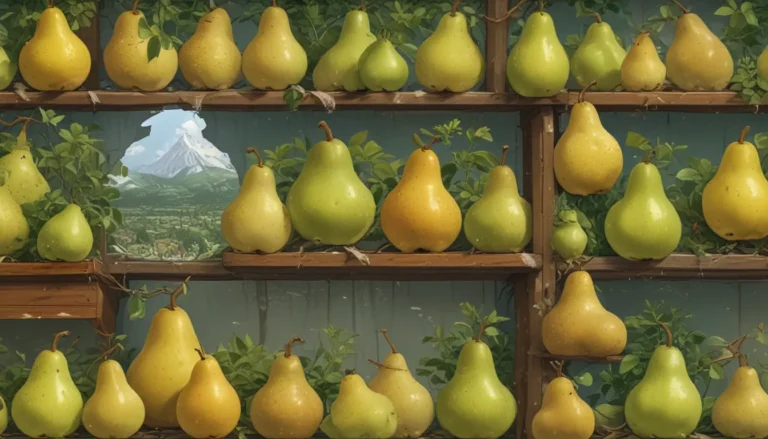Effective Strategies to Safeguard Your Garden from Slugs and Snails

As we eagerly anticipate the arrival of spring and the blooming of our gardens, we are also reminded of the unwelcome presence of slugs and snails that emerge with the changing weather. These slimy creatures have a notorious appetite for our lush foliage and delicate flowers, causing significant damage to our beloved plants.
These nocturnal raiders can quickly decimate leaves, flowers, herbs, vegetables, seedlings, bark, and even ripening fruits. If left unchecked, they can create havoc in our gardens, making gardening a frustrating experience.
But fear not! There are natural and environmentally friendly methods to control these pests and protect our gardens. Through a combination of tactics such as baiting, trapping, barriers, repellents, and biological controls, we can effectively manage slug and snail infestations and reclaim our gardens.
In this comprehensive guide, we will explore the best practices and safe solutions for dealing with these pesky intruders. By implementing these strategies, you can ensure the well-being of your plants and enjoy a pest-free garden once again.
Understanding Slugs and Snails
Before we delve into the control methods, it is essential to understand the habits of slugs and snails to effectively combat them. These gastropods leave behind a shiny mucous trail, indicating their presence in the garden. They prefer cool, moist environments and are most active at night or on overcast days.
Slugs and snails both have similar bodies and biology, with slugs lacking the external spiral shell found in snails. They move using a muscular “foot” that secretes mucous to aid in gliding. Knowing their behavior and preferences will help in devising effective control strategies.
Disrupting and Displacing
One of the initial steps in managing slug and snail populations is to disrupt their habitats and remove their hiding spots. Clearing debris, trimming weeds, and eliminating potential shelter areas can help reduce their numbers. By undercutting low branches and removing unnecessary materials where they can hide, you can disrupt their environment.
While some areas like rock walls and decks cannot be removed, they can serve as ideal locations for baiting and trapping these pests.
Handpicking as an Effective Control Method
For those brave enough, handpicking is a practical and efficient method for reducing slug and snail populations. By watering infested areas at dusk and using a flashlight to pick them off by hand, you can manually remove these pests from your garden. Ensure to wear gloves during this process to protect your hands.
Regular handpicking sessions, especially during the evening hours, can help keep their numbers in check and prevent further damage to your plants.
Baiting and Trapping Techniques
Baiting and trapping are commonly used methods to attract and eliminate slugs and snails. By creating enticing traps, you can lure these pests away from your plants and capture them effectively.
– Beer Dish Trap:
- Fill a shallow container with beer and bury it in the soil.
- Slugs and snails are attracted to the beer and will drown in it.
- Remove the corpses in the morning and replenish the trap.
– Hidey-Hole Trap:
- Create a sheltered environment for slugs and snails to hide under during the day.
- Use objects like plywood, plastic, or citrus rinds to attract them.
- Return after a day or two to remove and dispose of the trapped pests.
Natural Repellents for Slug and Snail Control
Various repellents can be utilized to deter slugs and snails from feeding on your plants. Incorporating natural substances that are unpleasant to these pests can help protect your garden effectively.
– Garlic:
- Crushed garlic cloves spread around the perimeter of the garden can repel gastropods.
- It also has the added benefit of killing those that come into contact with it.
– Copper:
- Uncoated copper flashing, banding, or mesh can act as a repellent due to the salts that form from oxidization.
- Consider using adhesive copper tape for easy application and maintenance.
– Vaseline and Salt:
- Smearing a mixture of Vaseline and salt on planter rims can deter slugs and snails from hiding underneath.
– Coffee Grounds:
- Sprinkle used coffee grounds around flower and vegetable beds as caffeine has been found to be toxic to snails and slugs.
- Ensure to use full caffeine grounds for optimal repellent effects.
Implementing Physical Barriers for Protection
Creating physical barriers can be an effective way to deter slugs and snails from reaching your plants. By utilizing materials that are sharp or abrasive, you can prevent these pests from accessing the foliage and causing damage.
– Stone Chips, Crushed Egg Shells, or Diatomaceous Earth:
- Build a berm using these materials around vulnerable plants.
- Diatomaceous earth, in particular, has sharp edges that irritate gastropods and deter them from gliding over it.
Ensure to use food-grade diatomaceous earth and follow application instructions for optimal results.
Harnessing Biological Controls
Beneficial nematodes are a natural and effective weapon against slugs and snails in the garden. These microscopic worms prey on the eggs of gastropods, reducing their proliferation and population over time.
– Beneficial Nematodes:
- Apply nematodes to the soil in spring and late summer/early fall.
- The nematodes target the eggs of slugs and snails, reducing their numbers substantially.
- Make three consecutive applications for best results and maintain nematode populations every 18 months.
Nematodes are harmless to humans, pets, and beneficial insects, making them a safe and sustainable solution for controlling slug and snail infestations.
Ensure to refrigerate nematodes if not using immediately and verify soil temperatures before application for optimal efficacy.
Embracing Natural Predators in the Garden
Encouraging natural predators in your garden can also help manage slug and snail populations effectively. Animals such as frogs, toads, lizards, birds, and hedgehogs are known to feed on these pests, keeping their numbers under control.
By fostering a welcoming environment for these predators and minimizing factors that deter them, you can create a balanced ecosystem that keeps gastropod populations in check.
And for those seeking a more hands-on approach…
– Escargot, Anyone?
- Consider collecting snails in the garden for an edible treat.
- Purge and prepare the snails following culinary guidelines for a delicious escargot dish.
- Cooking and enjoying these pests can provide a culinary solution while managing their populations.
Remember to ensure your garden is free of pesticides before consuming snails gathered from the garden.
Choosing Safe Slug Baits
When utilizing commercial slug baits, opt for products that are safe for pets, wildlife, and the environment. Avoid toxic ingredients and prioritize solutions that are effective without harming beneficial organisms.
– Iron Phosphate-Based Baits:
- Iron phosphate baits are less toxic to pets, birds, and beneficial insects.
- These baits may take longer to act but are safer for the environment.
– Spinosad and Iron Phosphate Combinations:
- Certain baits combine iron phosphate with spinosad, providing a more rapid effect on gastropods.
- Follow label instructions carefully and keep pets away from treated areas.
By selecting safe and environmentally friendly slug baits, you can protect your garden while safeguarding the well-being of other organisms.
Conclusion: A Slug and Snail-Free Garden
In conclusion, combating slugs and snails in your garden requires a holistic approach that combines various strategies for optimal results. By disrupting their habitats, handpicking, utilizing traps and baits, implementing barriers, and leveraging natural repellents and predators, you can effectively manage these pests and protect your plants.
Choose safe and sustainable methods for slug and snail control to ensure the long-term health of your garden and the surrounding ecosystem. By adopting these practices, you can enjoy a flourishing garden free from the persistent threats of these slimy intruders.
If you encounter any challenges or have additional questions about managing slugs and snails in your garden, feel free to reach out in the comments section below. We are here to assist you in creating a vibrant and pest-free garden environment.
For more resources on pest management in your garden, explore the following guides for valuable insights:
- How to Control Japanese Beetles
- Avoid Cicada Tree Damage with These Tips
- How to Control Root-Knot Nematodes in Your Garden
Together, we can create a harmonious and thriving garden ecosystem that is resilient against the challenges posed by slugs and snails. Let’s work together to protect our plants and enjoy the beauty of our gardens without the nuisance of these gooey pests.
*





